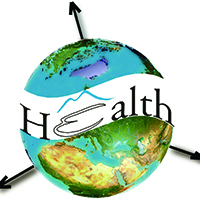Geographic clustering and region-specific determinants of obesity in the Netherlands

Submitted: 29 November 2019
Accepted: 16 April 2020
Published: 18 June 2020
Accepted: 16 April 2020
Abstract Views: 3030
PDF: 1313
HTML: 152
HTML: 152
Publisher's note
All claims expressed in this article are solely those of the authors and do not necessarily represent those of their affiliated organizations, or those of the publisher, the editors and the reviewers. Any product that may be evaluated in this article or claim that may be made by its manufacturer is not guaranteed or endorsed by the publisher.
All claims expressed in this article are solely those of the authors and do not necessarily represent those of their affiliated organizations, or those of the publisher, the editors and the reviewers. Any product that may be evaluated in this article or claim that may be made by its manufacturer is not guaranteed or endorsed by the publisher.
Similar Articles
- Omid Reza Abbasi, Yasser Ebrahimian Ghajari , Ali Asghar Alesheikh, A spatiotemporal analysis of the impact of the COVID-19 outbreak on noise pollution in Tehran, Iran , Geospatial Health: Vol. 17 No. 2 (2022)
- Yucheng Wang, Thomas C. Tsai, Dustin T. Duncan, John Ji, Association of city-level walkability, accessibility to biking and public transportation and socio-economic features with COVID-19 infection in Massachusetts, USA: An ecological study , Geospatial Health: Vol. 17 No. s1 (2022): Special issue on COVID-19
- Pengxin Zhang, Shuhan Yang, Shaoqing Dai, Darren How Jin Aik, Shujuan Yang, Peng Jia, Global spreading of Omicron variant of COVID-19 , Geospatial Health: Vol. 17 No. s1 (2022): Special issue on COVID-19
- Shuaicheng Chen, Spatial and temporal dynamic analysis of rabies: A review of current methodologies , Geospatial Health: Vol. 17 No. 2 (2022)
- Roghieh Ramezankhani, Nooshin Sajjadi, Roya Nezakati Esmaeilzadeh, Seyed Ali Jozi, Mohammad Reza Shirzadi, Application of decision tree for prediction of cutaneous leishmaniasis incidence based on environmental and topographic factors in Isfahan Province, Iran , Geospatial Health: Vol. 13 No. 1 (2018)
- Elias Nyandwi, Tom Veldkamp, Frank Badu Osei, Sherif Amer, Spatio-temporal dynamics of schistosomiasis in Rwanda between 2001 and 2012: impact of the national Neglected Tropical Disease control programme , Geospatial Health: Vol. 12 No. 1 (2017)
- Felipe J. Colòn-González, Adrian M. Tompkins, Riccardo Biondi, Jean Pierre Bizimana, Didacus Bambaiha Namanya, Assessing the effects of air temperature and rainfall on malaria incidence: an epidemiological study across Rwanda and Uganda , Geospatial Health: Vol. 11 No. s1 (2016): HEALTHY FUTURES
- Benjamin G. Jacob, Fiorella Krapp, Mario Ponce, Eduardo Gotuzzo, Daniel A. Griffith, Robert J. Novak, Accounting for autocorrelation in multi-drug resistant tuberculosis predictors using a set of parsimonious orthogonal eigenvectors aggregated in geographic space , Geospatial Health: Vol. 4 No. 2 (2010)
- Nnadozie Onyiri, Estimating malaria burden in Nigeria: a geostatistical modelling approach , Geospatial Health: Vol. 10 No. 2 (2015)
- Wim van der Hoek, Jan van de Kassteele, Ben Bom, Arnout de Bruin, Frederika Dijkstra, Barbara Schimmer, Piet Vellema, Ronald ter Schegget, Peter M. Schneeberger, Smooth incidence maps give valuable insight into Q fever outbreaks in The Netherlands , Geospatial Health: Vol. 7 No. 1 (2012)
<< < 6 7 8 9 10 11 12 13 14 15 > >>
You may also start an advanced similarity search for this article.

 https://doi.org/10.4081/gh.2020.839
https://doi.org/10.4081/gh.2020.839







